Executive Summary
Introduction gives an idea about the company that will be considered in this work, its main operations and line of business.
The Task 1 section looks at Greggs’ operations management through three theoretical frameworks: the input-transformation-output model, 4Vs, and order qualifiers and winners.
The Task 2 chapter summarizes the analysis in the previous section and provides two data-driven recommendations for the company that will improve its quality and flexibility scores.
Conclusion shows the result of the work done and emphasizes the relevance, adequacy and importance of such analysis and recommendations.
Introduction
The British bakery chain Greggs is one of the largest in the country. Operations within the company are centered around food production, customer service, and their orders at particular points or through delivery, as well as application support with an integrated loyalty program and the possibility of remote ordering. Therefore, the business process depends on suppliers, supply chains, logistics, technology, quality control, marketing, and other relevant departments. The main page of the Greggs website with the company logo in the upper left corner is in Figure 1.

Operational efficiency plays the most significant role in the success of fast-food companies. In most cases, it manifests itself in the speed of issuing orders and an affordable price for most of the market. However, the current competitiveness requirements and advances in process automation technologies also require a high level of service and social and environmental responsibility for the company’s sustainable development (Ivanov, Tsipoulanidis, and Schönberger, 2021). Capturing the target audience of consumers directly depends on the quality and effectiveness of the operational management of Greggs bakeries, which will be discussed in this paper using the appropriate theoretical frameworks and models.
Analyzing Greggs’ Operations Management Through Key Theoretical Frameworks
The Input-Transformation-Output Model
Concerning the restaurants and fast-food industries to which Greggs belongs, the main transformed inputs are the customer, whose natural food needs the company seeks to satisfy, and the material: the transformation of raw materials and ingredients into food is the leading indicator of competitiveness and a critical process. In the case of customers, not only does their physical state of satisfaction of hunger change but also the goal is to improve mood through the feeling of delicious food and high-quality service. Consequently, the influence goes on several levels at once, and the success of Greggs directly depends on the clients, which means that they are the dominant transformed resources.
Material is defined as products received from suppliers, from which, using unique technology, Greggs employees create dishes. Food products are the primary resources of this category and are extremely important from a management point of view: they provide customer satisfaction and are necessary for solving the primary tasks of a fast-food company. Information appears to be the least dominant category of transformed inputs, as it only accompanies the main two (Slack and Brandon-Jones, 2019). These inputs contain menus, ingredients, and special sections for vegans or gluten-free consumers.
Accordingly, the following resources are used to implement these tasks. Firstly, these are buildings where products are delivered, and ready-to-eat meals are baked for customers. Secondly, this equipment provides a complete cycle of production and sales of products from the receipt of raw materials from the supplier to the sale to the client. Thirdly, these employees control these processes and manage equipment, serve customers, cook food, or optimize the company’s activities.
The transformational process at Greggs is primarily driven by preparing meals, mostly baked goods. Successful sales result from a competent recipe, a wide choice, and an affordable price and taste of these dishes. This process transforms the material that comes to Greggs from suppliers. The second most important aspect is customer service; their hunger is reduced here, and their mood improves if the transaction succeeds. Accordingly, the two transformational processes that are most important for the organization are just working on the primary inputs, using the resources of both staff and facilities in both cases.
In the case of Greggs, the sale of dishes as products is accompanied in almost every case by the opportunity to dine in an institution where the service accompanies the dining process. As stated above, the main goal of any Greggs deal is to eliminate the client’s hunger and improve his mood through delicious food and quality service. In the first case, the achievement of the goal is facilitated by the company’s products, while the second is the quality of its services. Therefore, these outputs are equally important, although the main functional advantage in favor of products as the best engine of marketing attraction is still there, and it lies in the types of customers discussed below.
Technological development is becoming an essential integrated part of not only the internal processes of the fast-food industry but also external ones. Mobile applications, where customers can order in advance, and view the menu to save time in the establishment, have greatly improved the profitability of this industry (Akram et al., 2020).
Another vital part of the external environment is environmental responsibility, which is characteristic of any large company planning for sustainable development (Rhou and Singal, 2020). Reducing plastic emissions and switching to eco-friendly packaging and degradable materials have recently been not just the agenda of eco-friendly organizations but also the requirement of federal and international authorities (Kwilinski et al., 2019). The company’s reputation depends on these actions, and Greggs conducts complex activities in several directions at once, from the conservation of resources to the reduction of harmful substances (Greggs, 2023b). It can be concluded that the company copes with the influence of external factors.
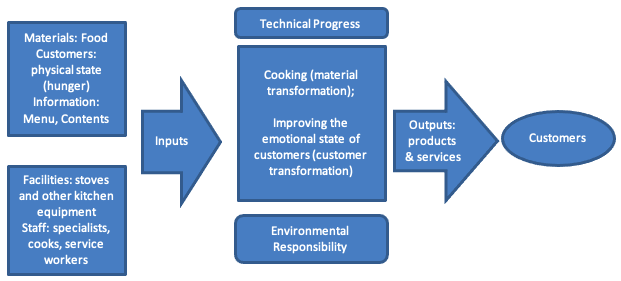
Table 1. Greggs Transformation Processes with Examples.
Finally, customers can be divided into two types: actual visitors to Greggs bakeries and consumers through delivery. The capture of the second market audience is possible only thanks to high-quality dishes, while the first group often deals with the company’s service. Figure 2 displays this transformation scheme, while Table 1 provides a visual accompaniment of the listed elements of this model.
4Vs Typology of Operations
4V’s of operations is another essential tool for understanding a company’s internal operations. Greggs has a high volume of demand as their processes are systematized and similar across many locations across the country, while the product line is accompanied by low unit costs (Greggs, 2023e, Slack and Brandon-Jones, 2019). A striking contrast to this aspect is expensive gourmet restaurants, where the price threshold and level of service are significantly increased. Greggs, on the contrary, is trying to keep prices low by optimizing production costs and the supply chain.
Despite a relatively wide range of products in the form of affordable dishes and drinks, the company processes are routine and algorithmic and imply low unit costs. The chefs in Greggs kitchens have no room for creativity, they work for a large mass of people. In contrast, again, with restaurants, customer service is long-term and includes a range of small activities, including help with wardrobe. Consequently, according to this model, Greggs has a low variety of operations, although their menu is quite diversified.
Variation of demand is also low due to the fact that the processes are permanent and routine in spite of external factors. In addition, the mass production of each item in the line implies an extremely high level of utilization. Each Greggs point has almost no uniqueness; most have the same menu and service features. Accordingly, flexibility is limited by the available menu, which again speaks in favor of low variety. Although marketers are trying to be in touch with demand through constant menu adaptations and the capture of new market segments such as healthy eating, all changes in supply chains and other business processes are also being introduced to further automate.
Demand visibility is low, with a time lag between production and consumption. However, this fact does not apply to every item on the Greggs menu: coffee, for example, is prepared as soon as a client receives an order. Consequently, the visibility aspect has the most balanced ratio between high and low in this 4Vs model, but with a downward bias. This attraction is still due to the standardized process and low unit costs, despite the need for contact with people and preparing some dishes in front of the client. However, mixed high and low aspects of visibility are common in many business industries (Slack and Brandon-Jones, 2019). Concerning Greggs, according to the specified implications, almost all the considered categories of the model are on the right side, as can be seen in Figure 3.
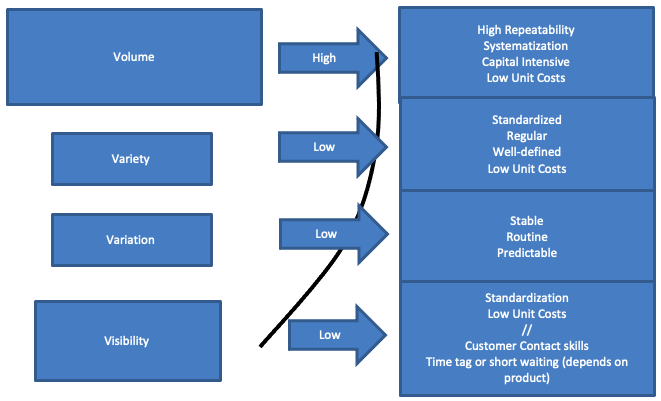

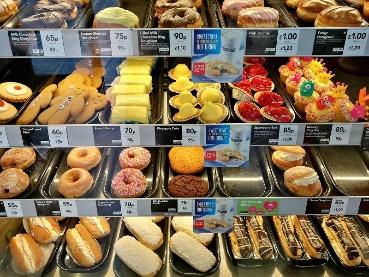
Figure 4 shows the amount of baking work for one of the employees. Preparation takes place in advance, long before customers place an order. Given the quantity and uniformity of the dish in the picture, we can conclude that the process is repeatable and systematized, which allows for achieving low unit costs for customers (Singh et al., 2022). Figure 5 simultaneously reflects the classic set of product lines on the shelves of Greggs stores and cafes. First, each unit is presented in several copies. Second, the food is ready before the customer arrives. Thirdly, these lines are standardized for the entire network. As a result, customers know what they are looking for in the brand’s stores, Greggs’ strong association with baked goods at affordable prices is due to this standardization and high levels of process automation.
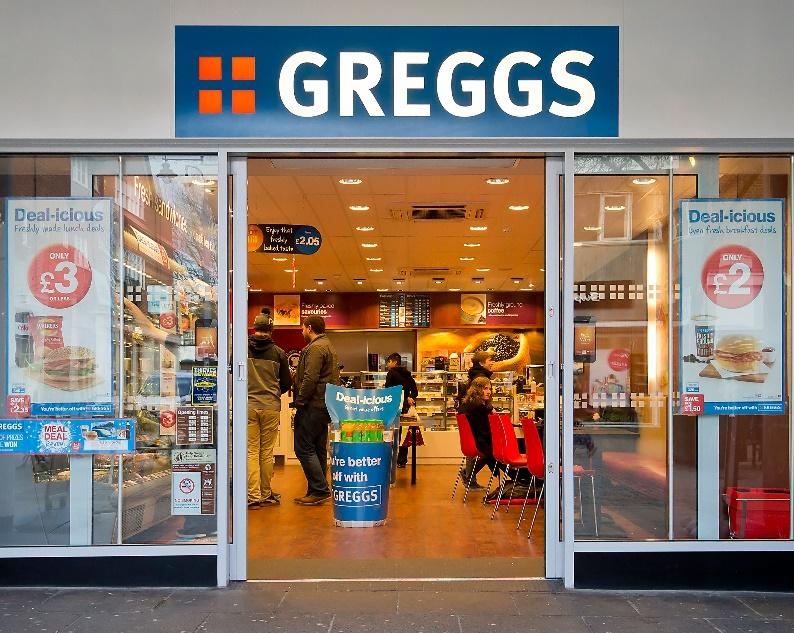
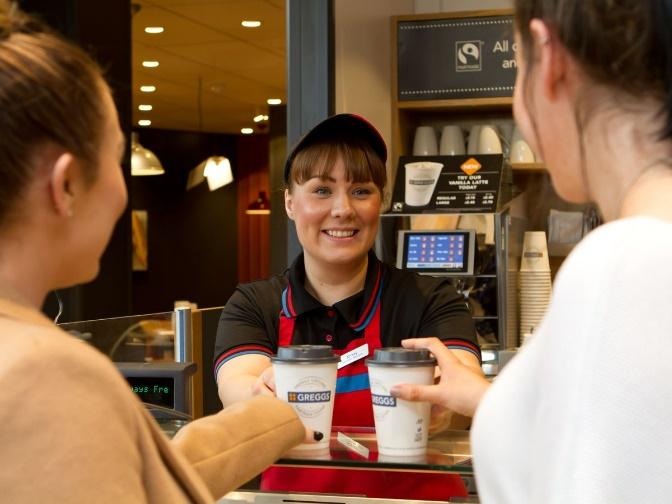
Figure 6 shows that there are usually no huge queues at Greggs – such situations happen either at opening a new outlet or during rush hour. Accordingly, it is possible to control demand and prepare products in proportion to incoming proposals. At the same time, the process of selling dishes in the company is of a routine nature of production and delivery to outlets, again in favor of low variation.
Finally, from Figure 7, it is possible to understand the degree of visibility from the 4Vs model relative to Greggs. Here one can see that the coffee machine is behind the employee, which means that customers can see how the product is prepared. However, at the same time, the kitchen is hidden from the eyes of the consumer, and in some cases, pastries and desserts can be prepared well in advance before the client arrives at the cafe. Accordingly, visibility is complex and multidirectional for different product categories.
Order-Winners and Order-Qualifiers
Order winners and order qualifiers are essential tools for understanding customer needs. While the first category refers to the strengths of the two-stakeholder experience, the second refers to what can be improved (Slack and Brandon-Jones, 2019). In this regard, these structures are dynamic both across the entire target audience and within a single client, which can change preferences over time. Identifying strengths and weaknesses allows the format of a valuable competitive offer that will distinguish the company in the market, predict threats and opportunities based on known analysis, and update it.
Order winners are the Greggs dishes themselves, which have won nationwide audiences. The quality of the goods is always top notch for the indicated affordable price, no matter when it was made. The fast-food industry is often praised for its taste, but in the case of Greggs, it has a connotation of homemade food due to its associations with pastries. Given the opportunity to order healthy food and high-quality coffee, the company covers a large audience of people who value time, taste, and quality service at a low price. If taste and quality had not delighted visitors for such a long time, Greggs would hardly have become one of the largest bakery chains in the UK.
Another example is the approach to clients of employees who, with their attitude, improve their mood. Table 2 in the figures will show that consumers are generally satisfied with their purchases. The company can afford high service standards due to the network’s size and financial capabilities: each client will be able to feel in a quality establishment where there are pretty cheap dishes.
Order qualifiers are more challenging to find in a company positioning itself as a discounter that the low cost of most products can make up for other disadvantages. Nevertheless, according to the analysis, it is possible to improve safety control in the production of products. Table 2 shows that employees work without gloves, which carries certain risks, especially concerning the spread of COVID-19. The raw product will be heat treated when baked, but workplace hygiene precautions can be better observed.
The second point about order qualifiers is the relatively short menu in the hot food category. Fresh baked goods are also often warm, but any meal is more enjoyable when the food is warm. As can be seen from the figure in table 2, most of the goods are stored in a refrigerated display case, after which they are heated as customers order. As a result, the number of dishes in it is minimal, which can be explained by the complexity of implementing the production and supply chain of such diversification steps. However, a more extensive menu would have attracted more people to Greggs, who could afford a hearty and healthy lunch or dinner.

Summary and Recommendations to Enhance Quality and Flexibility at Greggs
According to the above analysis, the most apparent and obvious recommendations for changes are those that were voiced in the order qualifiers. Although even now, Greggs is not at the center of conflicts over the quality of its prepared meals, and it is possible to keep this indicator at the top and use it as a competitive offer for many years to come. To do this, it is necessary to strengthen safety measures at work, implementing gloves and other personal protective equipment, if necessary. In this regard, the Quality score will be improved by eliminating the potential risks of spoilage of products, which may not be traced until the sale to the customer.
It should be noted that this proposal is consistent with the company’s policy on corporate social responsibility, where employees are one of the most important values (Greggs, 2023c). Consequently, their safety will be in the first place for the organization’s management, in connection with which this implementation is comprehensively positive. The only negative is the increase in operating costs, which on the one hand, may affect prices for the final consumer, but on the other hand, given the capabilities of Greggs, this change will be insignificant, if at all.
While Greggs is one of the companies where most processes, including menu cooking, are standardized, the increased flexibility could be an advantage over other fast-food brands. This improvement can be achieved by expanding the menu, particularly the hot food section. At the moment, the company offers several second courses and only one soup; however, having a relatively large number of different products among the various fillings of pastries, this diversification is more than possible.
Fast food rarely offers a large selection of food, especially in the categories of vegans, gluten-free, division into first and second courses, and salads, with a considerable number of items in each of the sections. By taking a step in this direction, Greggs will strengthen its leadership by attracting a new audience that will appreciate the opportunity to have a hearty meal, including pastries as snacks. As a result, the company may consider implementing combo meals, including a main course, pastries, and a drink, and adapt the loyalty program accordingly, expanding its capabilities as the menu expands. Such business aspects as quality and flexibility, unlike cost and speed, are not distinguished by high rates, and accordingly, they always have a window for improvement.
Conclusion
The analysis of the operational management of the British bakery chain Greggs showed what resources are used to achieve the company’s goals. The main transformational processes were the creation of delicious food and the improvement of the physical and emotional state of customers. Like other representatives of the fast-food industry, Greggs showed a reasonably predictable picture for the 4Vs model with high volume, low variety, variation, and low visibility, but the latter aspect was more of an average direction than unambiguously polar. Based on the results obtained, the strengths and weaknesses of the company were determined using the order winners and qualifiers framework. Greggs’ strengths, which have made it one of the largest chains in the country, are the food and the people who provide the service.
Things to improve included safety and hygiene issues and a menu expansion. The recommendations ultimately repeated the indicated actions in qualifier orders, meeting the requirements for improving quality and flexibility, which, as a rule, are different for this industry in contrast to speed and cost. Therefore, this work comprehensively assesses Greggs’ operational processes and demonstrates the relevance of the analysis by identifying a range of potential improvements that can keep the company in the lead in the market.
Reference List
Akram, U., et al. (2020) ‘Feeling hungry? let’s order through mobile! examining the fast food mobile commerce in China’, Journal of Retailing and Consumer Services, 56, p. 102142. Web.
Greggs. (2023a) ‘Greggs’. Web.
Greggs. (2023b) ‘Responsibility: Environment’. Web.
Greggs. (2023c) ‘Responsibility: People’. Web.
Greggs. (2023d) ‘Menu & Allergens’. Web.
Greggs. (2023e) ‘Vision and Values. Web.
Hall, L. (2022) ‘I work at Greggs – customers always moan about the same annoying things & no your steak bake won’t always be piping hot’, The Sun. Web.
Ivanov, D., Tsipoulanidis, A., and Schönberger, J. (2021) Global supply chain and operations management. New York City, USA: Springer International Publishing.
Kwilinski, A., et al. (2019) ‘Environmental taxes as a condition of business responsibility in the conditions of sustainable development’, Journal of Legal, Ethical and Regulatory Issues, 22, pp. 1-6. Web.
Odell, C. (2018) ‘Is this the greatest job perk ever? Greggs is hiring and one of its employee rewards is incredible’, Nottingham Post. Web.
Paul, D. (2022) ‘Inside Greggs’ bakery, where piemen would like to give George Osborne one in the eye’, The Mirror. Web.
Rhou, Y., and Singal, M. (2020) ‘A review of the business case for CSR in the hospitality industry’, International Journal of Hospitality Management, 84, p. 102330. Web.
Shropshire Star. (2022) ‘Greggs reveals how customers’ eating habits are changing as sales jump at bakery’. Web.
Singh, G., et al. (2022) ‘Antecedents and consequences of fast-food restaurant customers’ perception of price fairness’, British Food Journal, 124(8), pp. 2591-2609. Web.
Slack N. and Brandon-Jones A. (2019). Operations Management, (9th Edition). London, UK: Pearson.
Verdict Food Service. (2020) ‘How Greggs is continually adapting to its consumers.’ Web.